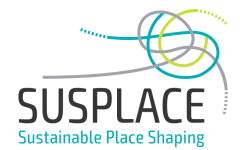The Call for Adventure
Once upon a time, in a galaxy not so far away… Actually in this galaxy. On this planet, in fact. Right over in a picturesque Dutch city called Utrecht… A gang of six intrepid wannabe earth warriors/ sustainability researchers*, gathered to learn how to wield a secret power (well, maybe not so secret). This power was well known to ancient humans and it has been carried forward to modern times in many forms. It can be used for good or for ill: to lift people up and support visions of a thriving and just world, or to oppress enthusiasm and joy, convincing people to sink into apathy and fear or into an endless cycle of mindless consumption.
It is (drum roll…) the Power of Story.
Venturing outside of our cozy comfort zone of academic articles and multi-syllabic social science jargon, six of us in the SUSPLACE Innovative Training Network decided to take a leap into the unknown. We are experimenting with writing a collection of short tales for children, putting our research into the language of story. Our first step, after committing to the quest and receiving support from our council of elders**, was to find a wise teacher who could share some insights to help us as we proceed.
The Gift of Storytelling
We searched far and wide, and one of the group finally led us to the dynamic storytelling sage Pierpaolo! Over an intense two days, fueled by abundant feasting, hearty laughter, and too much coffee and stroopwafels, Pierpaolo taught us the foundations of the power of storytelling, which will aid us on our quest. While we can’t tell you everything, here are a few key ideas that we will be taking with us:
- A clear goal is essential (e.g. a young girl has a dream of winning the science fair). Without a goal, a story is just a list of actions
- The goal comes with a clear question which needs to be answered with “yes”, “no”, or “no… but” (e.g. will she win the science fair? No, but she becomes best friends with her science hero, Neil deGrasse Tyson)
- A basic three act structure gives the story coherence (e.g. Act I – Set-up; Act II – Action; Act III – Resolution)
- Key tipping points give the story dramatic tension (e.g. Answering the Call for Adventure & The Point of No Return)
- Use the “Show Don’t Tell” principle to write scenes and present characters (“the girl was excited” vs “the girl couldn’t sit still and a huge grin spread over half of her face”)
Pierpaolo engaged us with very clear pedagogical style which included useful examples and hands-on writing practice and feedback sessions. For example, we practiced writing small vignettes that reveal the story setting and the personality traits of the characters, conveying emotions, wants, or morals by describing our characters’ actions (rather than literally naming them). Not only are the insights useful for conventional story telling, we also noticed that many of the principles can be translated into academic writing (luckily for our supervisors).
To be Continued…
The next step in our journey will be to put these powerful insights to use. Will we be successful? Who will be the next mentor to join our journey and what gifts will they bring? Will we create a delightful children’s book that communicates our ideas and enthuses those who read it about the magic of place shaping? Stay tuned…
For more information about our storybook concept, click here.
Additional Resources
The Writer’s Journey: Mythic Structure for Writers by Christopher Vogler
The Hero’s Journey by Joseph Campbell
Winning the Story Wars by Free Range Studios
The Heroine’s Journey by Maureen Murdock
Pierpaolo’s Storytelling and Consulting (highly recommended by all workshop participants)
*Kelli Rose Pearson, Anastasia Papangelou, Angela Moriggi, Marta Nieto Romero, Lorena Axinte, Alessandro Vasta
**The SUSPLACE Steering Committee

